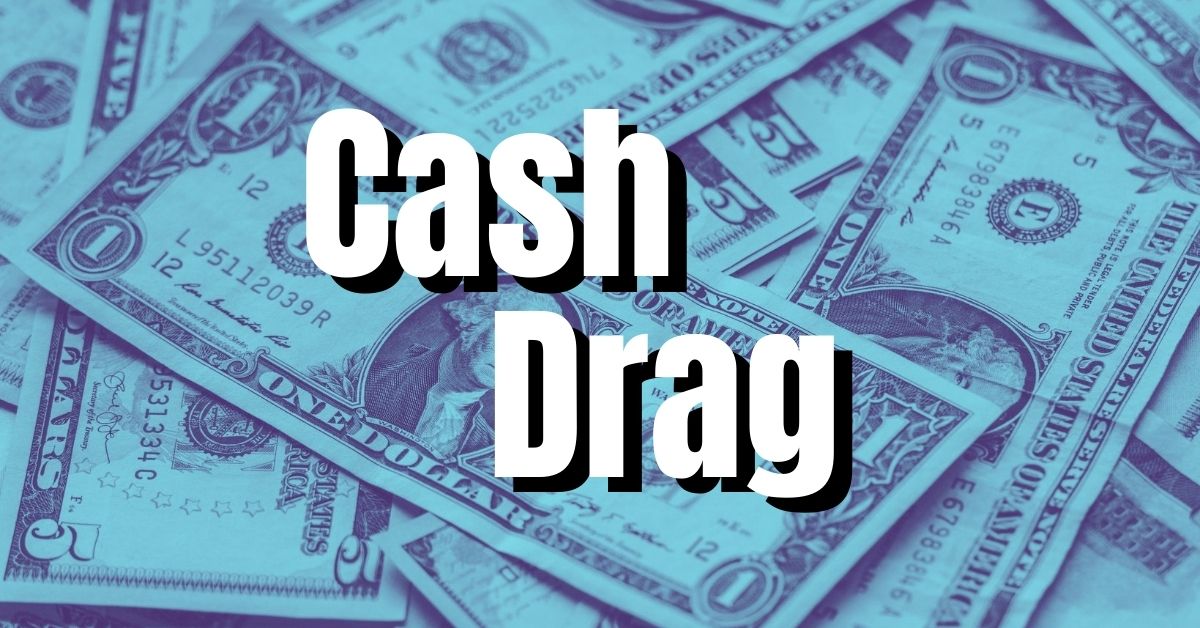Can you have too much cash in your portfolio? The answer to the question is not always so clear. It raises a number of issues:
- What could that cash be getting used for?
- Would I be covered in an emergency?
- What would happen if an investment didn’t pan out?
- Am I ready to jump on a great opportunity if one comes up?
In this article, I discuss some of the key factors for figuring out how much cash is “too much,” if that’s even possible.
What is Cash, Really?
Cash is liquidity.
Liquidity is the ability for something to be converted into cash. Naturally, cash doesn’t need to be converted at all – it’s already cash!
This means it can be spent immediately – it does not need to be converted into something else first. It’s the highest form of liquidity.
The more cash you have, the more liquid your portfolio. And the more liquid your portfolio, the easier it is to move into different positions.
Why is it important to hold cash?
For one, there are powerful psychological benefits to holding cash. Holding cash will give you some peace of mind knowing that you can cover an emergency if one were to pop up or otherwise take advantage of a great opportunity.
In that way, it can make you a better, more patient investor. The pressure to prematurely sell a long term investment gets reduced.
Everyone should have at least some money parked off for potential emergencies. How much is entirely up to you. But if you can’t handle a financial emergency with your cash savings, you’ll be more vulnerable to having to liquidate your other investments at an inopportune time.
Conversely, with cash available, you can capitalize on short-term market fluctuations to your benefit. Cash reserves effectively reduce risk as well, since you have money to weather a financial storm.
Of course, holding a bunch of cash is not always the best option. We’ll talk about cash drag below.
The Opportunity Cost of Holding Cash
Every investment decision has an opportunity cost. This includes the decision to hold cash.
Opportunity cost is the forgone benefit of the next best alternative. It’s what you could have done instead of something else.
When you decide to hold your money as cash, you are foregoing the returns you could have made from buying stocks, real estate, or any other investment.
Naturally, the opposite of investing your cash is holding it. You can grow your portfolio by investing it; you can’t grow it by leaving it in cash forever.
The lost potential returns from not investing that cash result in cash drag.
WHAT IS CASH DRAG?
Cash drag is when a portfolio’s cash balance remains un-invested, so that portion of the portfolio does not grow. It’s the opportunity cost of not investing the cash.
Technically, the only way to avoid all cash drag is to remain fully invested.
This isn’t to say that you should try to completely eliminate all cash drag. But realize that cash drag is the cost to keeping cash in your portfolio.
The Other Downside of Holding Cash: Inflation
Especially throughout modern history history, governments and central banks have created lots of money. As more dollars gets created, each dollar loses some of its value.
When dollars lose their value, prices go up relative to that dollar. The result is inflation.
Inflation is, effectively, a tax on savings. If you hold cash during an inflationary period, your cash will lose value relative to everything else, even if you do nothing with the cash in the meantime.
So, while it is often “safe” to hold cash, it’s not without significant downside risk. It’s hard to say exactly what the rate of inflation will be over the long term, but it’s always a risk in something like the fiat money system the world enjoys today.
A Less Liquid Alternative
What if you want to avoid cash drag and the threat of inflation while also staying relatively liquid?
Leverage can be a powerful tool for remaining liquid while also remaining invested.
That is, you can invest all of your non-emergency fund cash and then use a loan to take money out of your portfolio when you want to use it.
Later, once you earn more cash from your career or investment income, you can pay the debt back down. And you remained fully invested the whole time.
Of course, whenever debt is added to the equation, so is the risk of default. If your portfolio falls, your debt balance won’t. You still have to pay back the debt at some point.
But, for someone who wants to increase potential liquidity while also remaining invested, it can be a viable option.
Doing What is Right For You
So, can you have “too much” cash?
There’s no one size fits all answer to the cash question. How much cash is right for you depends entirely on your risk tolerance and existing portfolio.
Simply put, your decision on how to handle your money depends on your financial situation and your values. You’ll have to answer plenty of questions first. How much debt do you have to worry about? Do you have the temperament to hold through volatility? Do you have enough money to take care of potential emergencies? What are your alternatives? And so on.
Just as what you invest in depends on your personal preferences, the amount of money you don’t invest matters too.
This website, and any communication stemming from it, while hopefully informative, should not be taken as financial or legal advice. Assume all links are affiliate links. I am an Amazon affiliate.


